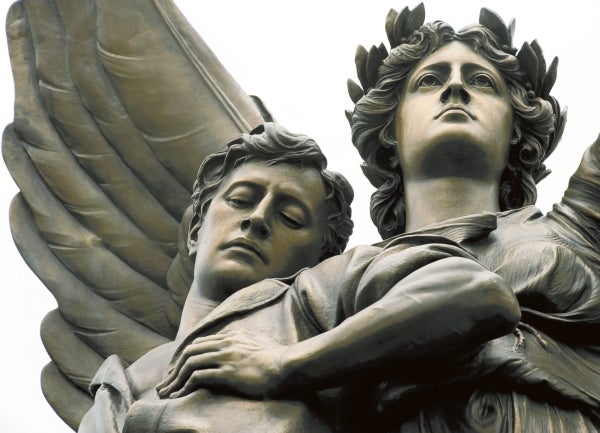Elizabeth Cook: A time for calm
Published 12:37 am Saturday, August 19, 2017

- The Confederate statue of ‘Fame.'
SALISBURY — The Confederate monument that rises from the median on West Innes Street could offer Salisbury an opportunity to set a powerful example.
While politicians in some cities call for the swift removal of Confederate monuments, and protesters in other locales tear statues down, Salisbury could — and should — approach this debate with reason and compassion.
We should make the fate of this monument a communitywide discussion that involves everyone — blacks and whites, faith leaders, historians, artists and anyone else who wants to address the issue in a calm, thoughtful way.
The ultimate decision may rest with the United Daughters of the Confederacy. The UDC was responsible in 1909 for erecting the winged statue of Fame holding a wounded soldier, and the group owns it to this day. UDC members need to hear your ideas and learn how all segments of the community feel. Meanwhile, the UDC remains mum.
Salisbury started this process two years ago, after the Charleston, South Carolina, church massacre prompted calls for removing Confederate flags and monuments from public spaces. The white supremacist who killed nine African-Americans said he wanted to start a race war. Sometimes, it seems he has succeeded.
Salisbury responded to the 2015 attack with a prayer vigil in Bell Tower Park, followed by two community meetings — a City Council public hearing about the monument on July 21, 2015, and a Hood Theological Seminary forum on July 30, 2015.
Conversations that started with the Confederate monument soon took a different path, however. Speakers challenged the City Council to talk about problems such as racism, employment, economic disparities, neighborhoods and crime. Those are the real issues that challenge this community, not a statue.
There were also calls for a new monument honoring the history and contributions of African-Americans. It appeared Salisbury might make peace with itself by erecting another statue, chiseling out a different inscription or taking some other action.
“Let’s start a new heritage,” one forum participant said.
The public discussion ended there, though. People moved on, and concerns about the monument seemed to fade — until last week.
The violence that erupted in Charlottesville, Virginia, near a Robert E. Lee statue seemed to cement the link between Confederate monuments and the white supremacist groups behind the Unite the Right rally. A neo-Nazi plowed his car into a crowd of protesters, killing one woman and injuring 19, and the incident triggered reaction across the country.
In Durham, protesters toppled and destroyed a statue of a Confederate soldier. In Baltimore, vandals flung red paint on the sister monument to Salisbury’s statue, and overnight the Baltimore mayor had all Confederate monuments removed.
Rumors spread Thursday night that the UDC was removing the Salisbury monument. Some people drove downtown to see if it was still there. It was, of course. Was the rumor wishful thinking on someone’s part, or did the heavy equipment parked nearby to tear down a bank give someone the wrong idea?
The Salisbury monument’s fate should not be decided under the dark of night at the hands of rash protesters or at the direction of a public official.
Instead of fulfilling the Charleston murderer’s wish for war — instead of taking action that would just ratchet up the tensions that erupted in Charlottesville — Salisbury needs to take a different path.
Mayor Karen Alexander has been besieged by calls from people angry about the Salisbury Confederate monument — either because it still stands on a major city street or because they fear it might be removed. Alexander says the community must take the lead in this discussion, not her. But Alexander and the City Council can pull the community together once again to engage this important subject and figure out where we go from here.
The mayor says such a gathering is being planned and details will be announced soon. Meanwhile, she asks for calm and patience.
Salisbury has tackled sensitive issues before — from dedicating the Oak Grove Freedman’s Cemetery in 2006 to commemorating the 1906 lynchings of three black men just two weeks ago.
Slavery, the Civil War, Reconstruction and the Jim Crow era cast long shadows across the land. The past indeed is not even past.
Salisbury can deal with these difficult topics peacefully. We’ve done so before, and we can do it again.
Elizabeth Cook is editor of the Salisbury Post.

